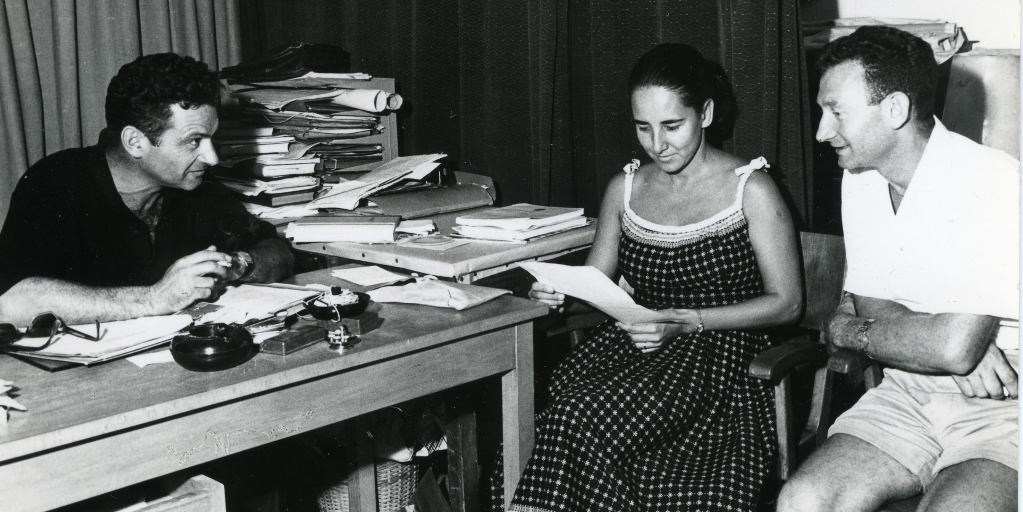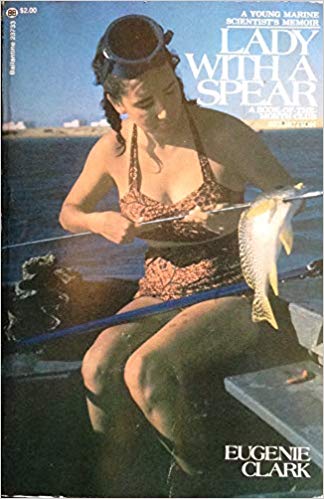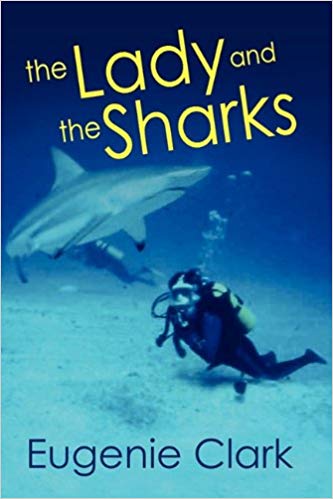“I don’t get philosophical. Love fish. Love sharks. Keep the water and their habitats as clean and protected as possible” – Eugenie “The Shark Lady” Clark, American Ichthyologist
Early life
In the world of Marine Biology, there are two prominent female figures in my mind: Sylvia Earle, aka Her Deepness, and Eugenie Clark, aka the Shark Lady. Anyone who knows me will already know why they are so special to me, simply by reading their nicknames. I am a marine biologist, a shark scientist, and a woman so it feels special to have two such successful figures to look up to and to follow in their footsteps. You can look out for a post about Sylvia Earle very soon, but first let me tell you about her good friend and someone she looked up to since her childhood. Eugenie Clark was born in May 1922 (a Taurus like me!) in New York City to a Japanese mother and an American father. She became passionate about the underwater world when she was very young and wrote most of her school reports about the topic. She visited the Aquarium in NYC weekly and went on to study Zoology at Hunter College.
Photo ©Mote Marine Laboratory
Career
Her academic career was not without struggle: she got rejected from Columbia Graduate School because they were worried that, as a woman, she would later quit her scientific career to raise children (because it has to be one or the other for women, right?). She didn’t give up and studied for her Masters and Doctorate at New York University instead. During her studies she carried out research on the behaviour of fishes and sharks at institutes that to this day remain leaders in the field of marine and shark science: Scripps Institution of Oceanography, Woods Hole Marine Biological Laboratory as well as in Bimini (the Bahamas). She went on to study these subjects for over 50 years.
Achievements
During her lifetime, Eugenie was the recipient of countless awards and 3 honorary Doctorate degrees. And probably coolest of all the facts, several species of fish were named after her, including Squalus clarkae, also known as Genie’s Dogfish. She was a pioneer in scubadiving; was a freediver; wrote over 175 science papers; conducted over 70 submersible dives; led over 200 expeditions around the world; was an avid marine conservationist; and wrote 2 books*. Notably, she founded the Cape Haze Marine Institute in 1955, now known as Mote Marine Laboratory, another prominent and leading laboratory in the field of marine research. She served as its director until 1967 and returned in 2000, after her retirement, to work there as a Senior Scientist and Trustee until her death in 2015 at the age of 92! She lived a full and successful life in spite of the struggles women will have faced in her time, fighting them by never giving up.
Dr Eugenie Clark contributed a huge amount to our current knowledge of the oceans, fishes and sharks. Knowledge that is still relevant and referenced to this day. She was an amazing woman who I will never stop looking up to. Because how could you not?
If you want to read more, check out Dr Clark’s books “the Lady and the Sharks”, and “Lady With a Spear: A Young Marine Scientist’s Memoir”
*Fun fact: she also helped create the first IMAX film!
______________
About the Author
Jenny Bortoluzzi studies the spatial and foraging ecology of marine predators with a particular focus, and passion, for sharks and their relatives. She is supervised by Dr Andrew Jackson, Dr Nick Payne and Dr Ian Donohue and is based in the Zoology Department at Trinity College Dublin. Find out more about her research here:
Twitter | @SharkyJenny
ResearchGate | Profile
______________
Related Posts
Closing the Gap Between Diversity Talk and Diversity Actions by Annabel Smith in 2018
Sea Serpents off the Port Bow! by Sarah Hearne in 2013
I am a nice shark, not a mindless eating machine by Sarah Hearne in 2013
All the better to see you with by Kevin Healy in 2012
Header image byBsteinitz on Wikimedia Commons (CC BY-SA 4.0)



